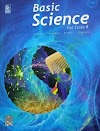Exercise
A. Answer the following in not more than 20 words.
1. What do you mean by polluted air or water?
2. Mention any three observations that indicate that a given sample of water is polluted.
3. What is chemical pollution of water?
4. Name six chemical pollutants of water.
5. Name four water-borne diseases.
6. What do you mean by potable water?
7. How is activated charcoal made and what is its role in the purification of water?
8. What is bleaching powder used for in the purification of water?
B. Answer the following in not more than 40 words.
1. How does carbon monoxide affect us?
2. What is the advantage of using CNG in preference to petrol or diesel in automobiles
3. Discuss three methods of preventing water pollution.
C. Answer the following in not more than 100 words.
1. Name three pollutants (except dust and soot) of air and mention their sources.
2. Describe eutrophication.
3. Describe an activity to show that alum helps the suspended particles of water to settle
D. Complete the following.
1....... is formed by the complete combustion of carbon.
2. Acid rain contains mainly and..... acids.
3. An increase in the CO, level in the air causes the...... effect. 4. Sculptures, monuments and buildings are...... by acid rain.
5. Ozonisation of water kills the...... in it and makes it rich in dissolved........
E. Choose the correct option in each of the following.
1. Which of the following affect(s) the ozone layer?
(a) Carbon dioxide
(b) CFCs
(c) Soot
(d) Dust
2. The ozone layer in our atmosphere protects us from the bad effects of
(a) the sun's ultraviolet rays
(b) carbon dioxide
(c) CFCs
(d) all of these
3. Which of the following is an oxygen-demanding waste?
(a) Pesticides
(b) Oil
(c) Grease
(d) Domestic sewage
4. Which of the following is/are used for disinfecting water?
(a) Chlorine
(b) Ozone
(c) Ultraviolet rays
(d) All of these
5. Reverse osmosis is used for the purification of
(a) air
(b) Ozone
(c) air as well as water
(d) All of these
F. Match the columns.
A
(a) Oil spill
(b) Ceramic candles
(c) Alum
(d) Bleaching powder
(e) Typhoid
B
(i) helps the sedimentation of suspended particles
(ii) a water-borne disease
(iii) reduces the transmission of light through water
(iv) water filter
(v) disinfects water










No comments:
Post a Comment